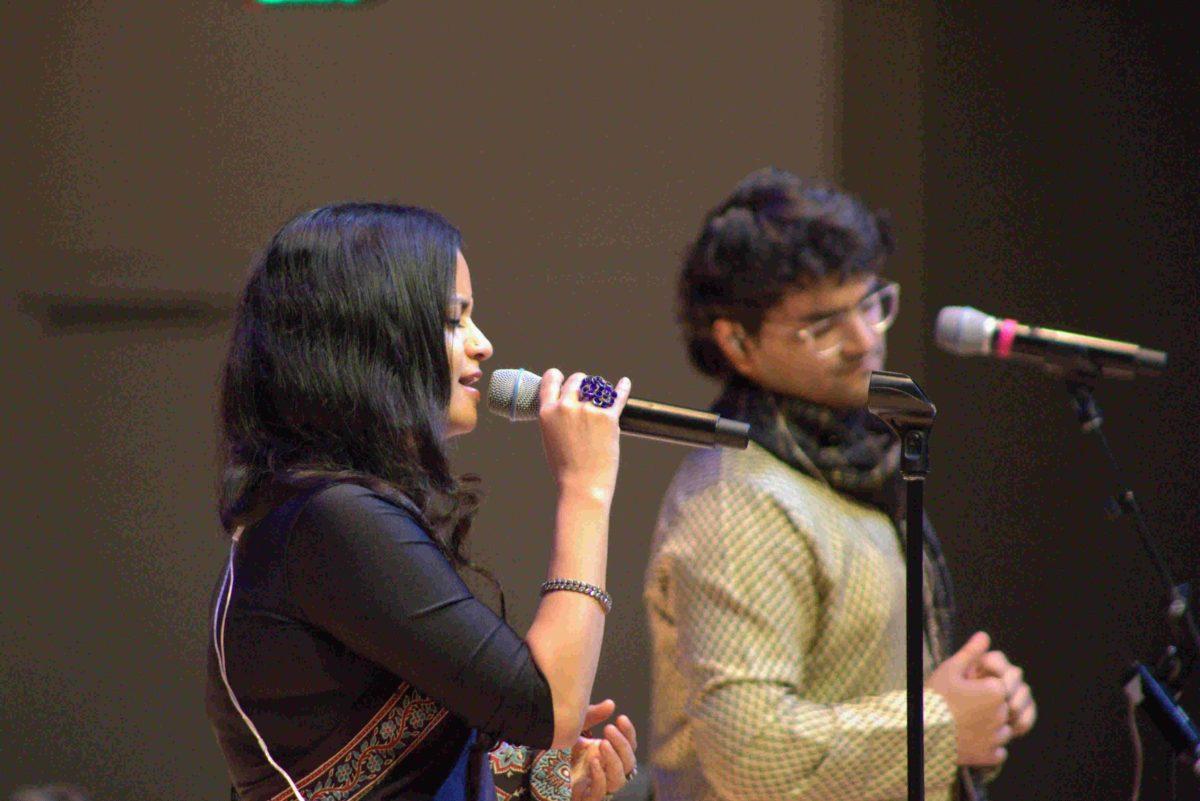Donning lehengas and kurtas adorned with embellishments and a variety of patterns, friends and families eagerly awaited the curtain-opening of the Anirudh Varma Collective concert on Oct. 1. The ensemble’s passionate melodies filled the hall as the singers performed freeing and soulful traditional music.
At first, I was a bit apprehensive about the concert. Was it going to be too traditional? Too folksy? What if I don’t enjoy it? In my experience with learning Indian classical music, it has been about structure, ensuring that every note is hit, and that the delivery is as close to how the composer intended it to be. I remember working through pages of note recognition — not enjoying music as it was supposed to be.
However, the Anirudh Varma Collective proved me wrong in so many ways. They took creative liberties and musical accuracy and blended them to create music that not only moved me but made me realize the richness of Indian classical music. It made me realize that there are many ways to stay true to the original music, while adding fresh twists that amplify the wants of musical palates today.
The Anirudh Varma Collective, or AVC, is a group of musicians adapting Indian classical-based music to appeal broader audiences. They combined Hindustani music — a form of Indian classical music largely associated with Northern India — with Western instruments like electric guitar, keyboard, drums and bass. Hindustani music is based on specific ragas, or scales, that may sound dissonant to Western ears because of their different note intervals, but AVC’s performance was consonant and gorgeous.
The performance told varied yet cohesive stories, ranging from love and separation to the joys of life. Lyrics were drawn from poetry by the famous Indian writer Kabir, expressing the emotions that came with life’s highs and lows. Nirbhay Nirgun, a poem by Kabir, was performed during the concert. This poem’s meaning translates to “fearless,” and AVC fully delivers this message through the slow building of the electric guitar and tabla (Indian drums), adding a feel of resilience. In the middle of the bhajan (devotional song), there is an endearing reference of Kabir – “kahata Kabira,” or Kabir says – that is marked by two drum beats before and after; something like a refrain for Western musicians. There is a finality and reassurance within these words, as they reflect the confidence Kabir has during his journey. The presentation of this composition introduces foreign elements whilst immortalizing the legacy of Kabir.
The performers’ traditional lehengas — Indian dresses for women — and kurtas — traditional Indian attire for men — glimmered on stage during the performances. Alongside their heavenly voices, the outfits added grandeur to the performance, gluing the audience members’ eyes to the performers.
Indian classical music has many styles and patterns, fluid in its singing yet stationary in its rules. As someone with only a few years of experience in this art form, it is hard to delve into the nuances of this art. But one thing is certain – the music was mesmerizing and enchanting, taking the audience through a gripping journey, note-by-note.







